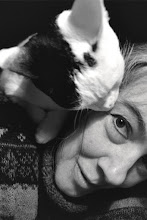Curtis Osborne - botched killing
Curtis Osborne
more one botched state killing !!!!
For 35 minutes, they couldn't find good vein for lethal injection
© The Atlanta Journal-Constitution
Executioners had trouble putting murderer to death
For 35 minutes, they couldn't find good vein for lethal injection
Published on: 06/04/08
Executioners struggled for 35 minutes to find a vein before Curtis Osborne died by lethal injection Wednesday for a 1990 Spalding County double murder.
Osborne, 37, was pronounced dead at 9:05 p.m., 14 minutes after his executioners injected the first of three fatal drugs. He was the second man Georgia has executed in a month. He also was the fourth person in the country to die by lethal injection since the U.S. Supreme Court ruled that the method was constitutional.
Even after a 55-minute delay while the U.S. Supreme Court reviewed his final appeal, the execution that was to have occurred at 7 p.m. was delayed even longer while prison medical staff tried to find acceptable veins in both arms.
Osborne said nothing while the I.V.s were inserted.
And once the witnesses were in place, Osborne shook his head "no" when Warden Hilton Hall asked if he had any final words. He nodded "yes," however, when a prayer was offered.
The prison chaplain prayed that God would find "favor" with Osborne. The inmate could be seen moving his lips also in prayer as the minister offered his words.
There was one last series of appeals Wednesday. The Parole Board denied his request for mercy on Monday.
Osborne was executed for shooting Arthur Jones and Linda Lisa Seaborne on Aug. 7, 1990. Osborne allegedly killed Jones because Osborne didn't want to give him the $400 he got for selling Jones' motorcycle. Seaborne was killed because she was there.
Jones' and Seaborne's relatives waited for news that the execution was over while about 25 protesters were outside.
As his hour of death approached, death-penalty opponents gathered at on the edge of the property of the Georgia Diagnostic and Classification Prison near Jackson, about a mile from the death chamber, and at locations in seven other cities. They held signs and sang in protest.
"The fact that there was a significant delay proves there is still a problem with lethal injection," Sara Tontonchi, one of the protesters, said after Osborne was dead.
Osborne stared at the ceiling as the first of the drugs "sodium pentathol” flowed. He looked at the prison nurse at his side, licked his lips and closed his eyes. A few minutes later he yawned, and then he didn't move again.
Two doctors pronounced him dead after monitors indicated his heart had stopped.
On his last day, Osborne visited several hours with 14 visitors, five at a time, until mid-afternoon. Once his visitation was over, Osborne was given his final physical. He returned to a cell just yards from the death chamber around 4. He declined his final meal "cheeseburger, potatoes, slaw and a cookie” or to make a recorded last statement or to have a mild sedative offered an hour before the scheduled 7 p.m. execution.
Then he waited for his execution.
Osborne's lawyers tried to save him by arguing he had an inadequate defense, especially when it came time to argue to the jury that it should sentence him to life in prison instead of death. Osborne's lawyers now say the late Johnny Mostiler, the white public defender in Spalding County at the time, had used a racial slur when he referred to Osborne, an African-American, and said his client should be executed. They also said Mostiler did not ask for money to hire an expert who could have told the jury of Osborne's mental illness, drug use and his family's dysfunctional history.
more one botched state killing !!!!
For 35 minutes, they couldn't find good vein for lethal injection
© The Atlanta Journal-Constitution
Executioners had trouble putting murderer to death
For 35 minutes, they couldn't find good vein for lethal injection
Published on: 06/04/08
Executioners struggled for 35 minutes to find a vein before Curtis Osborne died by lethal injection Wednesday for a 1990 Spalding County double murder.
Osborne, 37, was pronounced dead at 9:05 p.m., 14 minutes after his executioners injected the first of three fatal drugs. He was the second man Georgia has executed in a month. He also was the fourth person in the country to die by lethal injection since the U.S. Supreme Court ruled that the method was constitutional.
Even after a 55-minute delay while the U.S. Supreme Court reviewed his final appeal, the execution that was to have occurred at 7 p.m. was delayed even longer while prison medical staff tried to find acceptable veins in both arms.
Osborne said nothing while the I.V.s were inserted.
And once the witnesses were in place, Osborne shook his head "no" when Warden Hilton Hall asked if he had any final words. He nodded "yes," however, when a prayer was offered.
The prison chaplain prayed that God would find "favor" with Osborne. The inmate could be seen moving his lips also in prayer as the minister offered his words.
There was one last series of appeals Wednesday. The Parole Board denied his request for mercy on Monday.
Osborne was executed for shooting Arthur Jones and Linda Lisa Seaborne on Aug. 7, 1990. Osborne allegedly killed Jones because Osborne didn't want to give him the $400 he got for selling Jones' motorcycle. Seaborne was killed because she was there.
Jones' and Seaborne's relatives waited for news that the execution was over while about 25 protesters were outside.
As his hour of death approached, death-penalty opponents gathered at on the edge of the property of the Georgia Diagnostic and Classification Prison near Jackson, about a mile from the death chamber, and at locations in seven other cities. They held signs and sang in protest.
"The fact that there was a significant delay proves there is still a problem with lethal injection," Sara Tontonchi, one of the protesters, said after Osborne was dead.
Osborne stared at the ceiling as the first of the drugs "sodium pentathol” flowed. He looked at the prison nurse at his side, licked his lips and closed his eyes. A few minutes later he yawned, and then he didn't move again.
Two doctors pronounced him dead after monitors indicated his heart had stopped.
On his last day, Osborne visited several hours with 14 visitors, five at a time, until mid-afternoon. Once his visitation was over, Osborne was given his final physical. He returned to a cell just yards from the death chamber around 4. He declined his final meal "cheeseburger, potatoes, slaw and a cookie” or to make a recorded last statement or to have a mild sedative offered an hour before the scheduled 7 p.m. execution.
Then he waited for his execution.
Osborne's lawyers tried to save him by arguing he had an inadequate defense, especially when it came time to argue to the jury that it should sentence him to life in prison instead of death. Osborne's lawyers now say the late Johnny Mostiler, the white public defender in Spalding County at the time, had used a racial slur when he referred to Osborne, an African-American, and said his client should be executed. They also said Mostiler did not ask for money to hire an expert who could have told the jury of Osborne's mental illness, drug use and his family's dysfunctional history.










0 Comments:
Post a Comment
<< Home